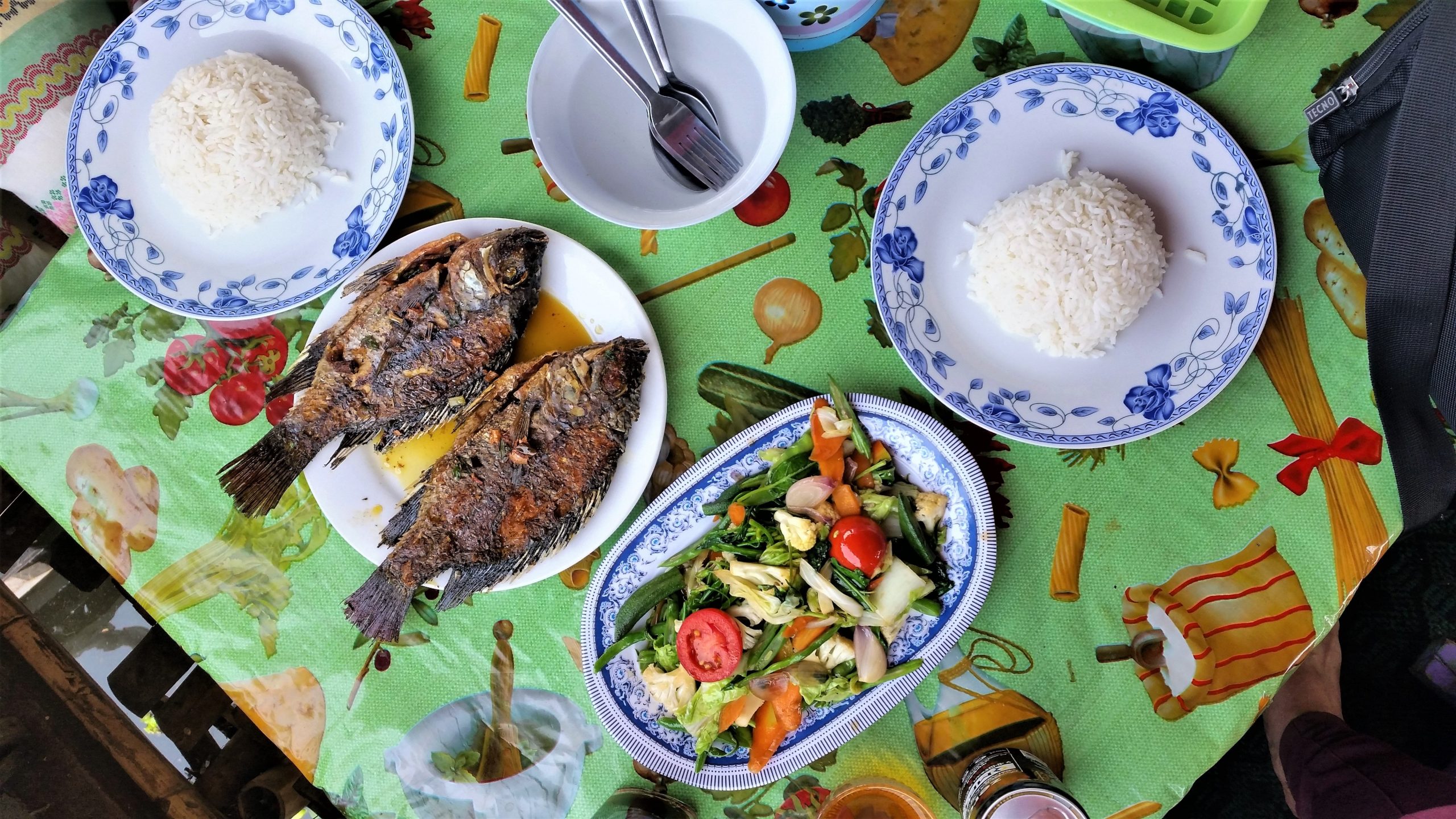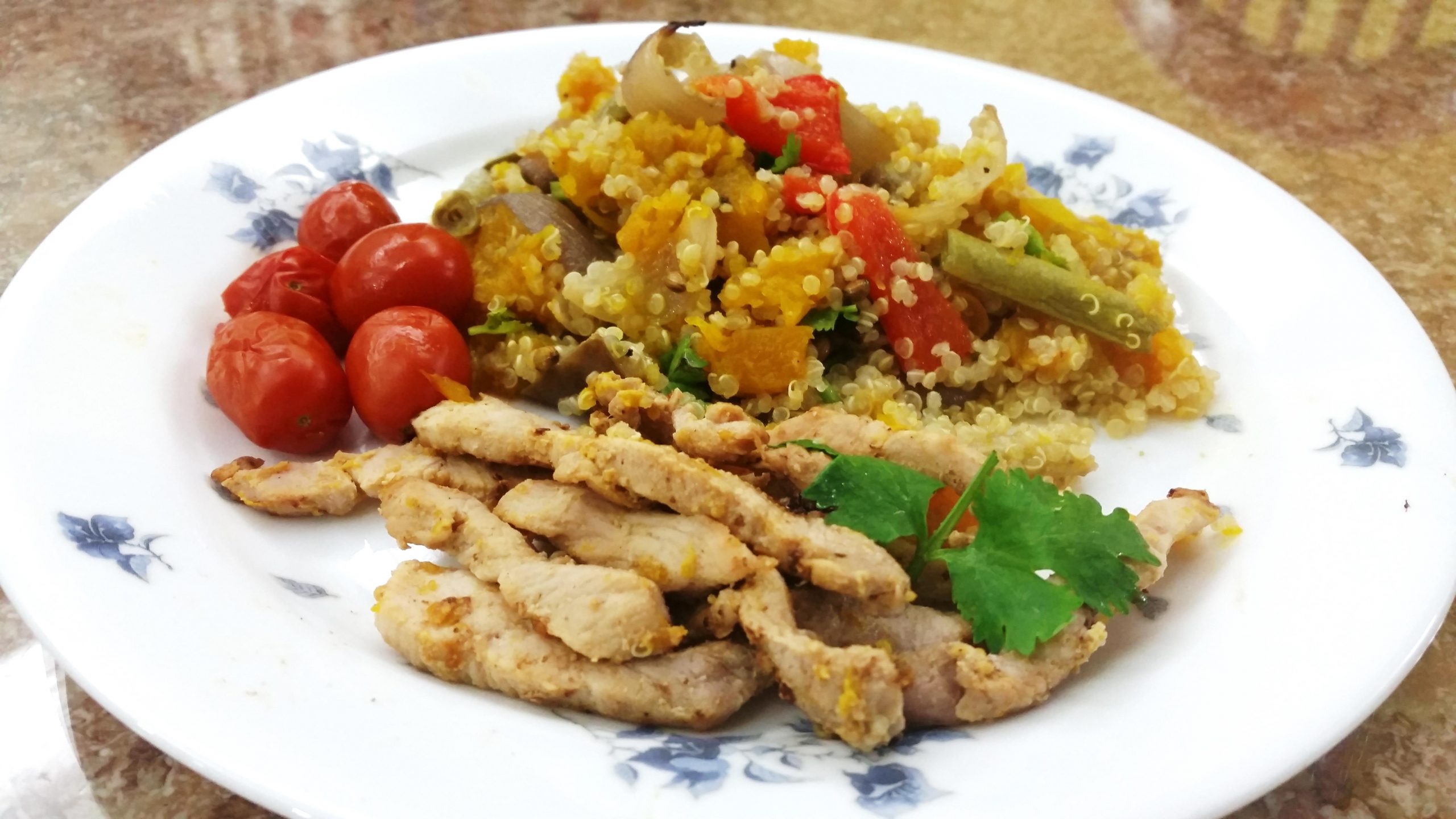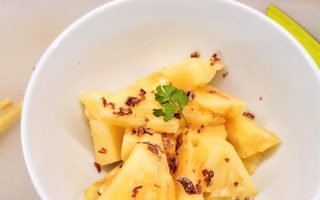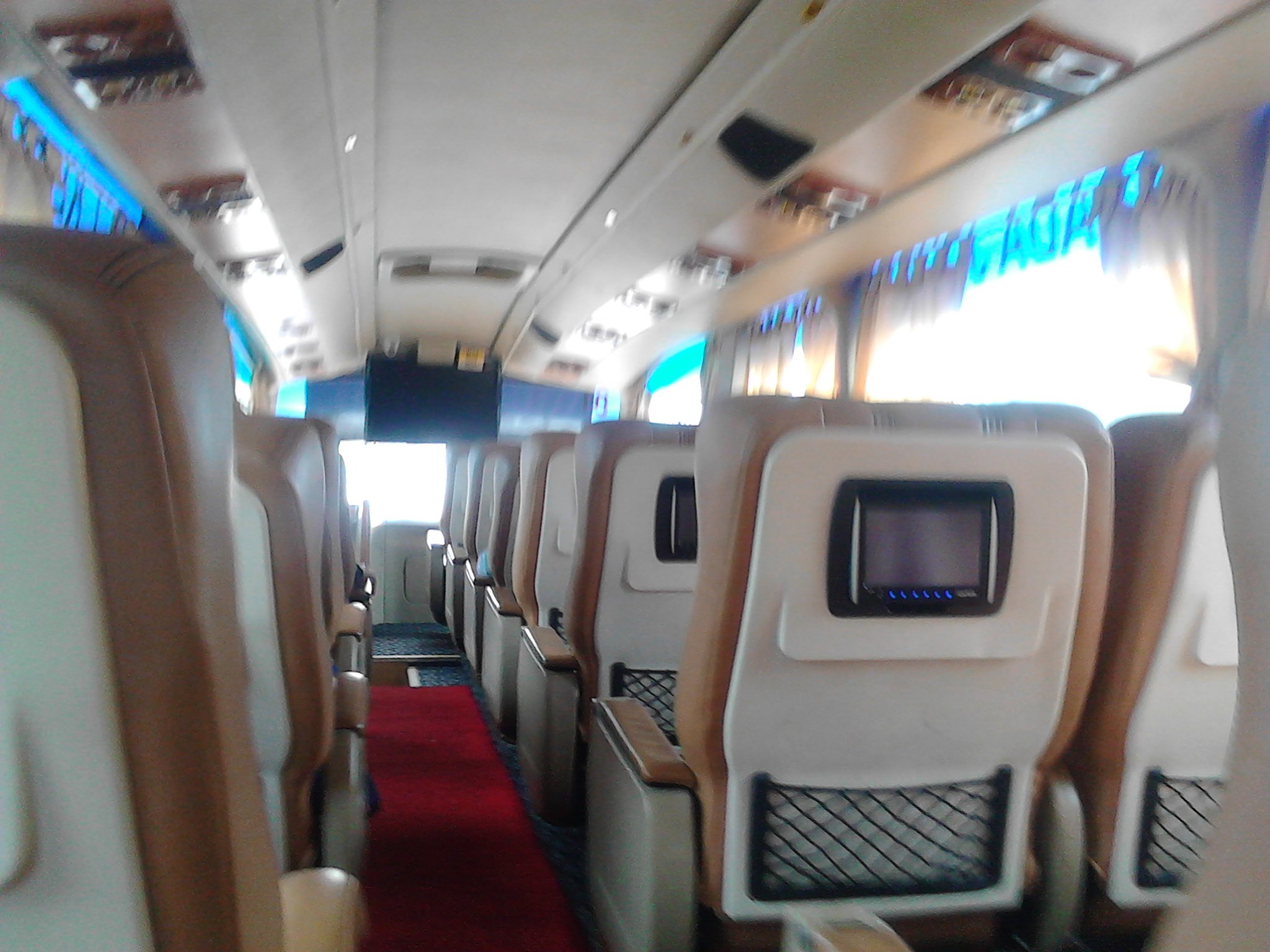![]()
For the 2nd day at Inle, we decide to go around the lake area to visit more tourist attractions. The first stop is the Hot Spring. Khaung Daing Hot Springs is a relatively new resort built for foreigners. The driver parked the car in front of the complex and opposite is a temple. While the little map we got from the hotel states that there is no spring, we found one opposite the road. It is a sort of small well, with hot water coming out of a pipe. The water is hot, but not boiling. As my friend is a staunch Buddhist, we visit the temple first. We climb up the stairs to the temple. As usual there are several statues of the Buddha. On the temple compound, there are some puppies and their mother , which later approach us. They are just a bag of bones. They look so starved and are eating from ‘food’ stuck on the ground ( probably chewing gum). The poor pups have ribs that you can clearly see. I tried to buy some food for them but I could not find anything suitable, like a bun or something.
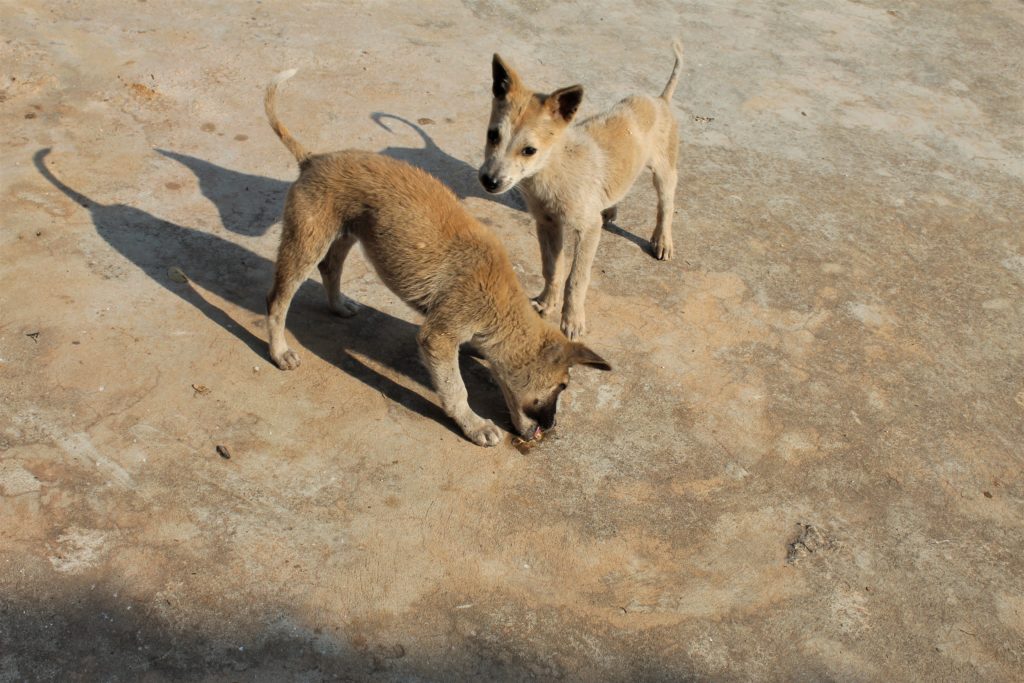
We then cross the road to enter the pool area. Of course, one has to pay a fee if one wants to use the facilities, i.e., to have a bath or a dunk in the hot pool . There are changing areas for men and women. The building has a unique roof structure whereby the wooden structure casts a beautiful shadow on the pools. We check out the pool and its surrounding areas. It is not exactly a bath area, more of dipping pools
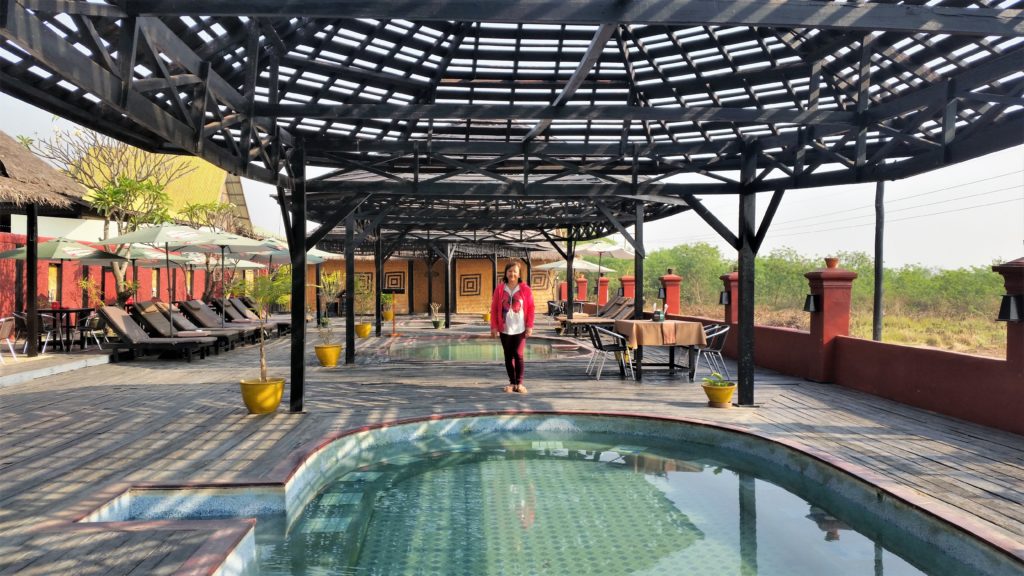
Then the driver takes us to the Market. There is this 5 day market whereby the location of the market moves every day. There are 5 locations, and every location will have the market every 5 days. However, the market is not in the area that we want to go today. He takes us to another market that has all the hall-mark of a Burmese market. there are vegetable vendors, souvenir stalls, clothes and handy crafts items, silver, etc. We end up browsing the various stalls and I ended up buying a jacket made of traditionally spun cloth.
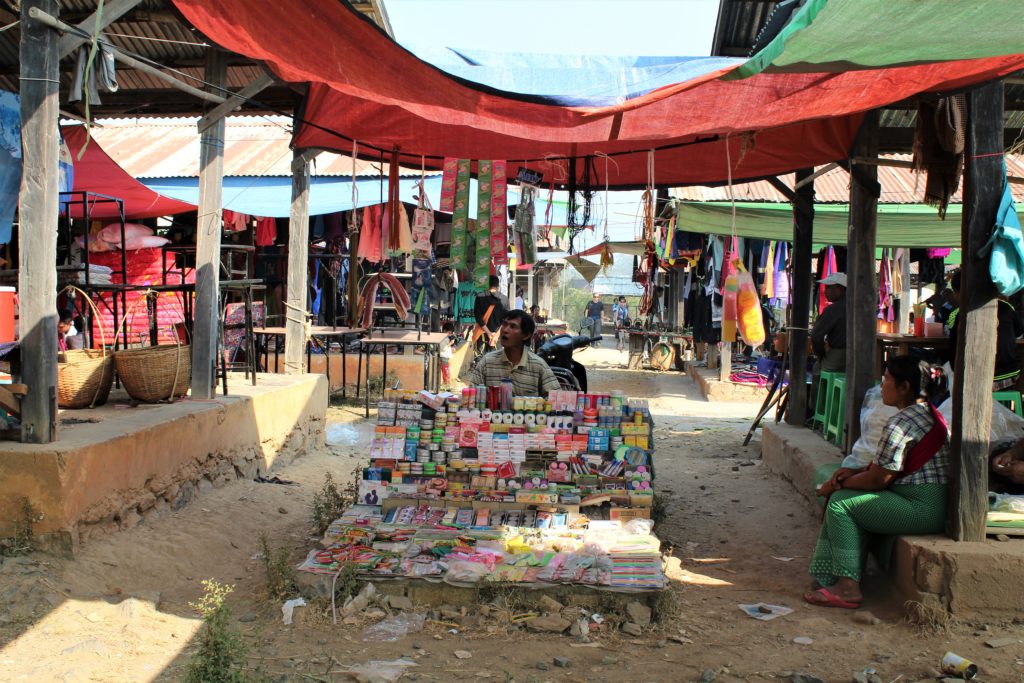
Of course, I pay for it with US Dollars. And oh, these people only take new or fresh looking notes. So beware when you are dealing with the store owner, make sure you reject old notes as other vendors do not want them. Or if they take it, they will give less value for it. For example, of your USD10 note is dirty, they will only accept it as say, USD 8!
Feeling very happy, we then visit a Burmese tofu factory. Burmese tofu is not exactly tofu, but the texture is similar. The tofu is made of lentils. It is a traditional food and is by grinding soaked lentils. It is then filtered, and the remainder of the lentils are grind again. The mixture is then cooked and allowed to set. There are no other added ingredients except for some salt. There was not one in the factory as I think the people decide to have a lunch break.
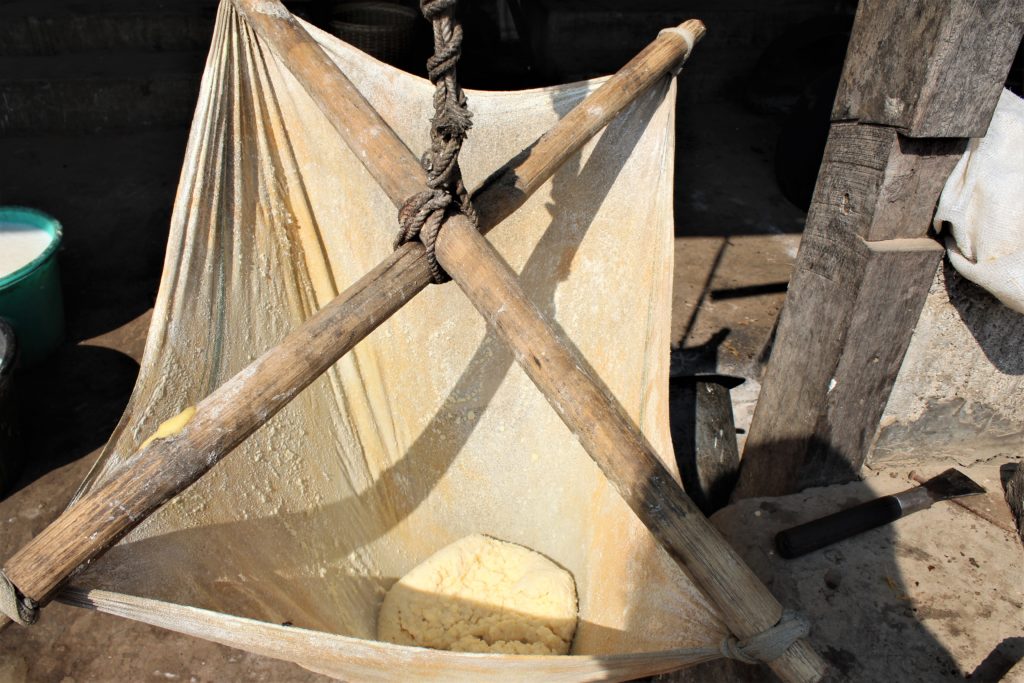
We then continue to walk to another house, where the flat soya cakes are made. According to my friend, the soya cake is a delicacy and she other have it regularly. It is a cottage industry and the women and children can be seen busy making, drying and storing the cakes. The soy beans are first soaked , then pounded and the made into rounds. it is then flattened by placing the round dough in between 2 layers of ‘hide’ and bashed with a heavy stone, like how tortillas are made. The flat pieces are then placed on bamboo trays and left to dry in the sun. It is then packed to be sold to shops. My friend bought some.
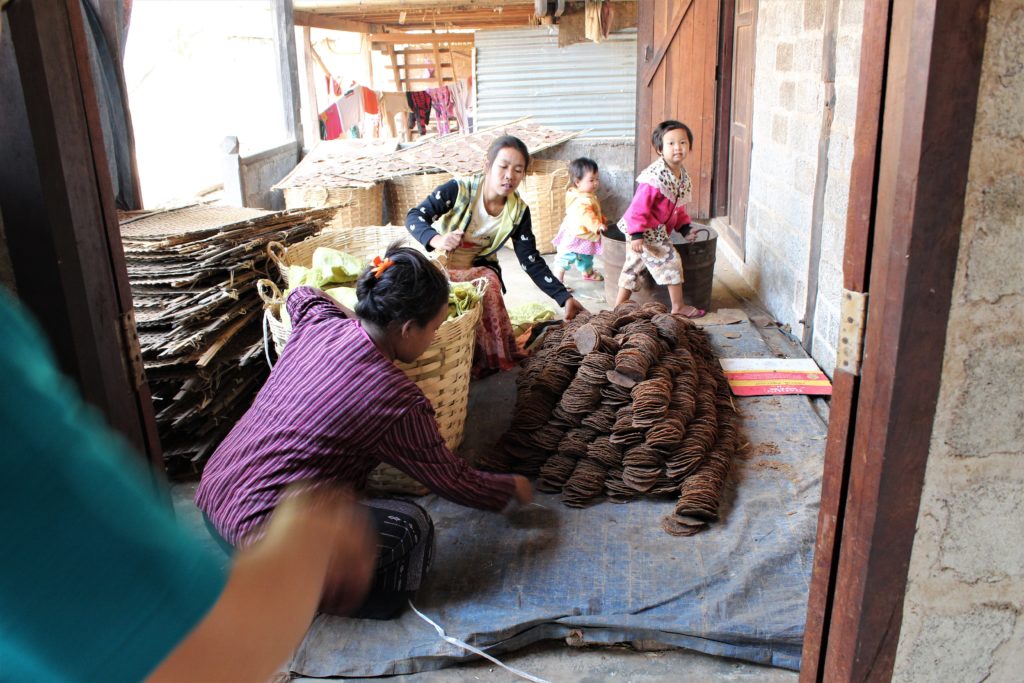
We then visit a temple, Naga temple. As far as I know, Naga means dragon in Sanskrit. In the temple, there are several snakes residing there. The chief monk speaks very good English and is highly educated. He explains that the snakes just come and go as they wish. People donate money and other things to the temple so that the snake can have a safe place to live. One hotel even donated a long bath tub! The tub is full of water when we visit. There are snake skins around as the snake sheds its skin regularly. We make a donation and then we walked around the area. There are tamarind trees and the we managed to get some by throwing sticks on the fruits. There are also pieces of wood stacked up and it seems snakes live in that area. Sometimes, people living in the area would ‘smoke’ the stacked wood to get the snakes off their area.
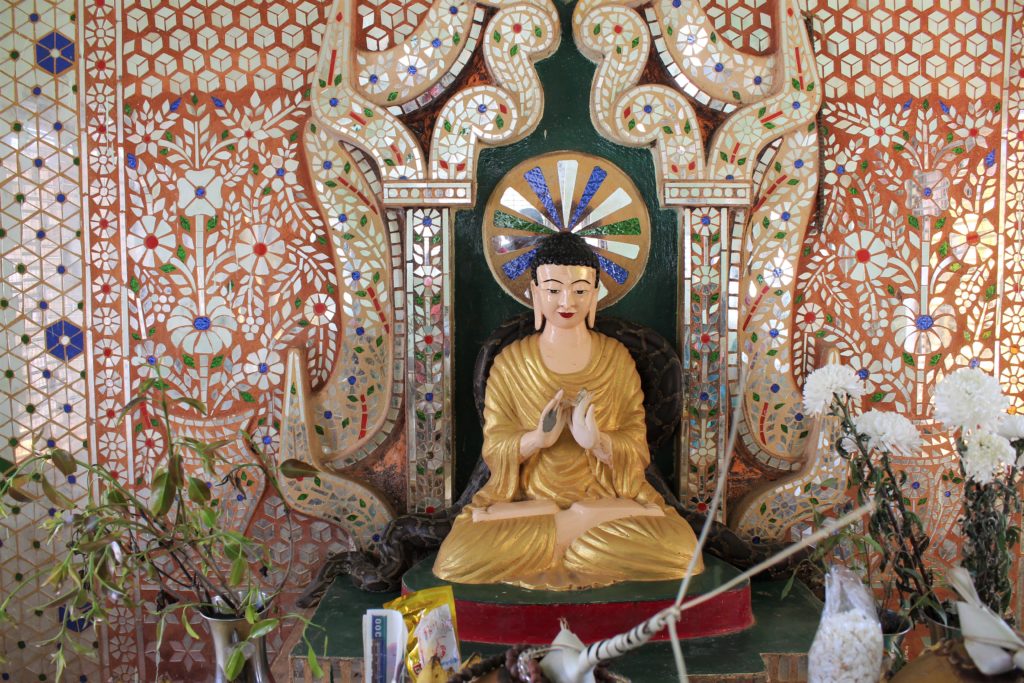
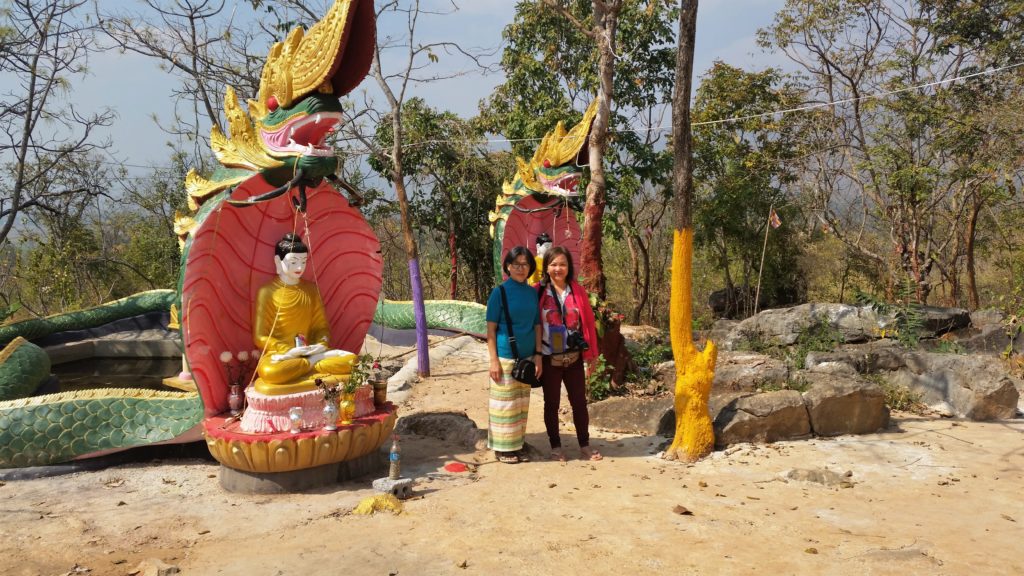
The driver then takes us to lunch. To reach our destination, we pass by some floating farms. We then walk along a bridge, and onto some sort of ‘planks’ that form a walkway to take us to some houses and restaurant. The buildings are built on stilts. There are floating farms all over. The restaurant is not the good-looking one, nicely painted and can be accessed by walking. It is further up the lake, the old rickety one.
We then need to take a boat across the other side of the lake – which is actually quite a short distance. Of course, the boat is rowed using the boatman’s leg. This is the tourist attraction. So we got on to our table and we ordered fish and some local stir fried vegetables from the floating farm. The place is rather rickety, and we have to be careful when getting on to and off the boat. While waiting for the order, we ladies obviously need to go to the toilet. Well, the toilet is a short walk away . Everything goes to the river. This is such an experience, going through all the ‘dangerous’ walking planks. Anyway our lunch arrives and the fish is actually very delicious. I try not to think that the fish is from the lake, and that the toilet experience…… Say no more, I need to wipe this from my head.
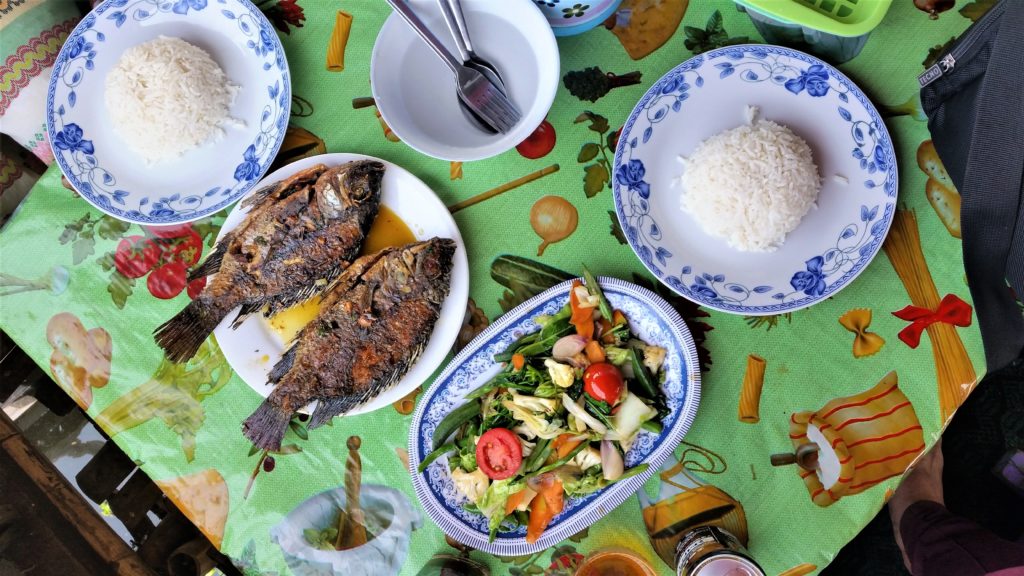
After the lunch we use the boat to get to the other side of the lake and walk back to our taxi. On the way, we bough some souvenir and lacquer-ware bags seem to be the popular item and I bought some.
The driver takes us to a winery. Yes, there is a winery in Inle. So we take a look at the place but unfortunately, the winery is not in operation as it is not harvesting time.The grapes are due to be harvested in another 1 to 2 months. There are notices that show that one can have a taste of the wines. We went to the restaurant but it isn’t the place for the wines, and we have to go to the winery sort of bar, to taste the wine. There is a taster menu where one can try 2 whites and 2 reds for 50,000 kyats. Feeling adventurous, and being a teetotaler, I decide that I shall try the wines since I have travelled this far. ( Ahem… and also to look cool). So I ordered the set and it comes with some nibbles.
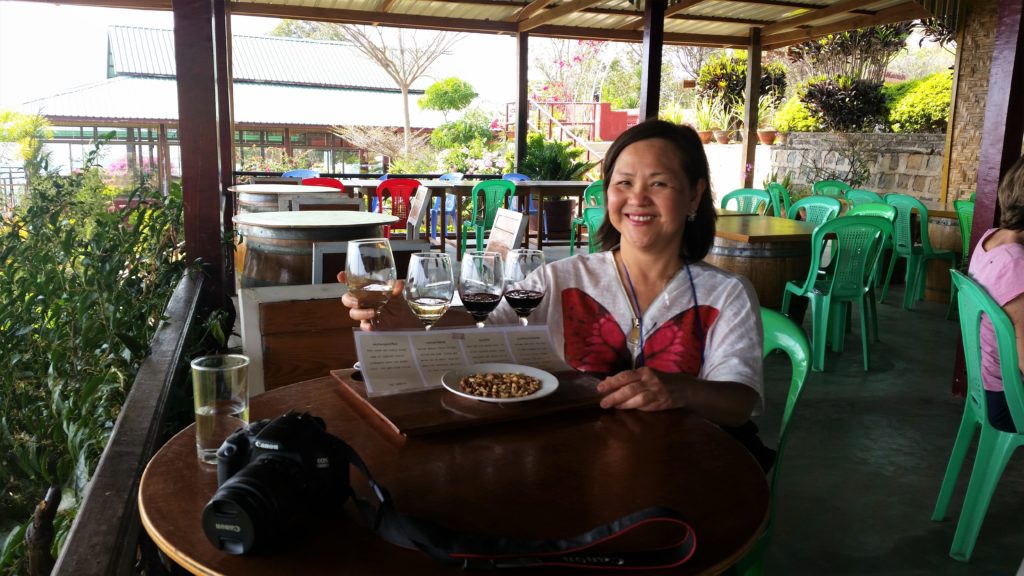
Before the wines arrive I walk to the vineyard and have a walk along the path. I tried the grapes and it is very sweet. However, the grapes are not as sweet as the ones in Canada that is used to make ice wines. Some of the grapes are already shrivelled, but it is still not time to harvest yet.
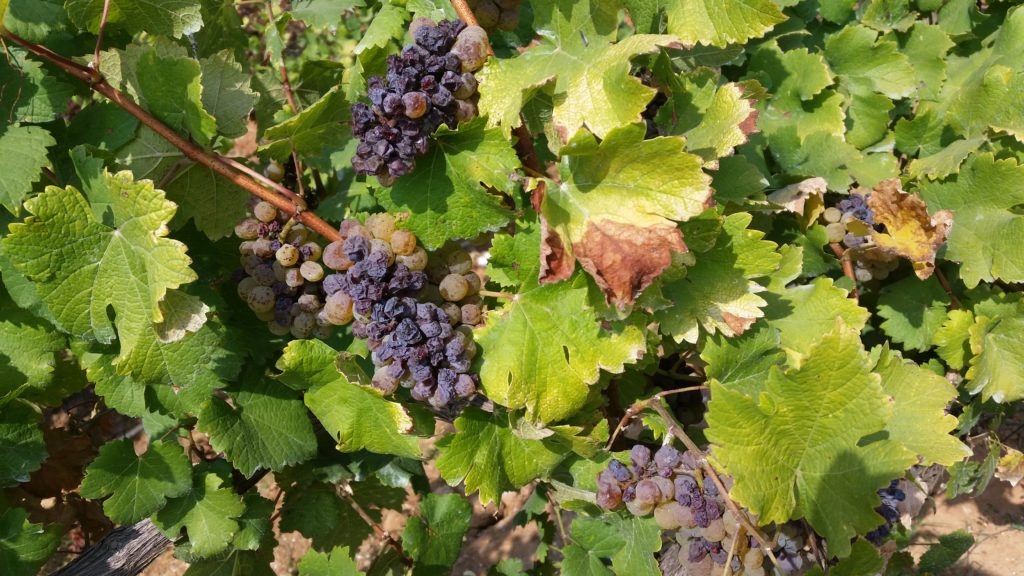
When the wines arrive, I tryone by one and the bouquet of the whites are really very nice. The 2015 Sauvignon Blanc is crisps and dry and with the fruity aromas of pineapple, guava and grape fruit. The 2015 Late Harvest has a very strong litchi (lychee) smell. It has all the properties described. For the reds, 2014 Syrah has a hint of vanilla, chocolate and spices. The other is a 2014 Shiraz-Tempranillo with black or red cherries aromas. I find the reds too strong and a lot of tannin. Guess what?. When I was a student, I like red wine and dislike whites. Perhaps, when I was a student we drank plonk, hence the dislike of white wines which tend to be dry. I have not been drinking ( social drinking as well) for many years and the last count was about 3 years before I drank any wine or cider. So I tell my friend to be patient as whenever I drink a bit of alcohol, my face would turn red and I would feel the flush on my face. I also feel a bit light-headed and I normally need to rest a bit for the effect to works itself out of my system. So this time, I have to wait for at least 40 minutes before leaving. Thanks, Devi, for the patience.
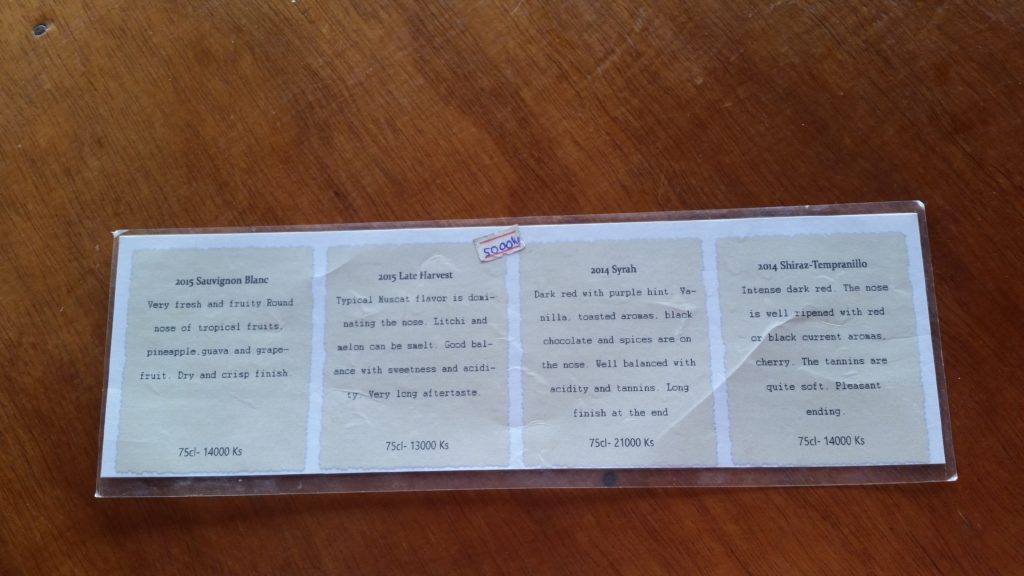
On the way back to the hotel we come across a new resort development. This shows that Myanmar is serious about the tourism industry . We then freshen up and pack our bags and wait for the taxi to take us to the bus stop to go to Yangon.
The trip to Inle is certainly much more interesting than Bagan. Firstly there are more things to do other than temples. Lunch was the most exciting part of the tour so far, having to endure the ‘fearful’ ride on the boat, climbing up the rickety stairs to the restaurant , one of a kind toilet, and lunch is actually delicious! We actually enjoy the whole trip and laugh a lot! Isn’t that what holidays are meant to be?
This time, the bus that we take makes 2 stops along the way. I feel that this is a bit disruptive and we are awaken by the stops and have to get down to the station and visit the toilet. We reach Yangon early in the morning.
It is a new day and we are going to Yangon later.
I hope you like the post, please share and like. So that more people can know about Myanmar. It is a beautiful country, full of natural resources, friendly locals and your tourist money helps the economy.
Until the next post, cheers,
Penang Lassie
